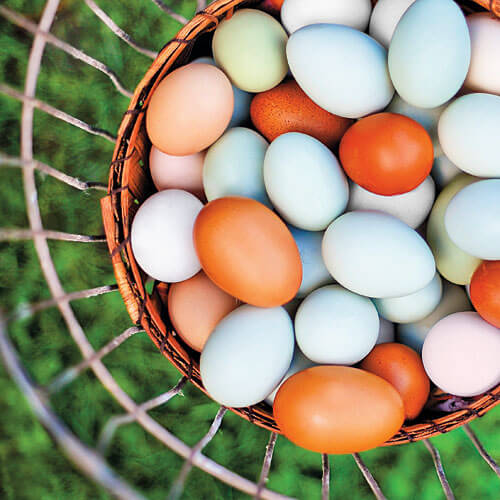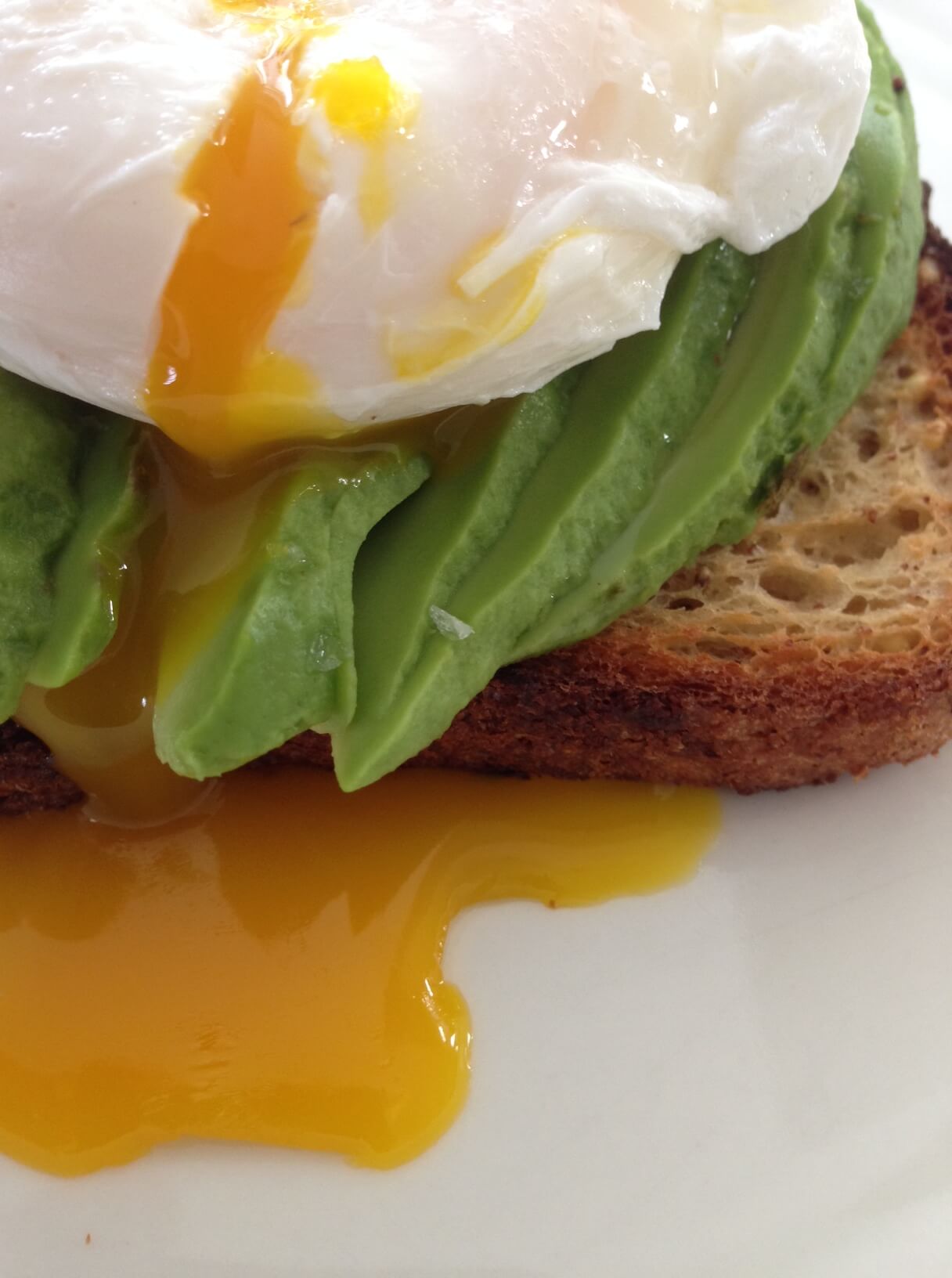Poached Egg on Avocado Toast
There is currently a commercial on television about how eggs are something that haven't changed over the years. The message is essentially that eggs are a whole food that hasn't been fiddled with. While the commercial played nice music and showed the ideal life on a family farm, it also left the feeling of a few questions unanswered. Have eggs really not changed over the years? Are all eggs the same?
Eggs are a great source of nutrients and quality protein for a relatively low cost compared to other animal products. However, just like it matters how WE eat, it also matters how WHAT WE EAT ATE. Make sense? Just like there is a difference between grass vs grain fed dairy and beef, it seems there is a big difference in eggs depending on the life and diet of the chicken.
Hens that are raised with lots of access to the outdoors, including picking up treasures from the ground like seeds, grasses, worms and insects, will lay eggs that have more nutrients than the eggs laid by chickens in cages that only eat commercial feed. The differences are not slight either. A study from 2007 from Mother Earth News examined the eggs from 14 different farms and took the averages to gather this information:
The yolks from happy, healthy, scavenging hens also have more lutein and zeaxanthin which can decrease the incidence of macular degeneration and cataracts. There is also more choline from the lecithin content in egg yolks.
Lecithin is a substance produced in our liver that helps us to digest fats (and regulate cholesterol), improve our absorption of fat soluble vitamins (namely vitamins A, D, E and K), aid in not forming gall stones and effect brain and nerve health as well as memory. Our brain is actually 30% lecithin. Wow. One of the best sources is egg yolk - but there is a catch. The best nutrition from an egg comes when the white is cooked all the way through but the yolk is still soft and liquid.
Poached Egg on Avocado Toast
eggs
sea salt
white vinegar
ripe avocado (a ripe avocado has a bit of give when you squeeze it and if you flick the remnant of the stem off you will see just green, no brown)
toast (or discs of roasted sweet potato, cooked spinach, tomato slices, hash browns, etc)
Directions:
Place enough water in the bottom of a sauce pan or sauté pan to cover an egg. The more eggs you plan to cook, the larger diameter pot you should choose (although if you are just starting to make poached eggs you might want to start with one or two at a time!). Bring the water to a full boil.
While you are waiting for the water to boil, put your bread of choice in the toaster and then cut your avocado by slicing it in half and removing the pit. Cut into quarters and peel the skin off (if you have to use a knife to get the skin off that means it is not a ripe avocado!). Thinly slice the quarters into slivers and keep them all together so that you can fan them out onto your toast.
When the water boils, add a generous pinch of sea salt and a teaspoon to tablespoon of vinegar depending on the quantity of water that you have. Crack your egg into a coffee cup and before you dump the egg in the water, stir the water with a spoon so that you have a little current going round and round in the pot. Gently dump your egg into this swirl and the current will encourage the white to envelop the yolk for the perfect poach. Set your timer for 4 minutes and follow this next part closely...
If you have a gas stove, turn the burner down to the lowest it will go and leave your lid on. If you do not have a gas stove, turn the burner off and set the pot OFF of the heat for the first minute and keep the lid on. After about a minute or so, put the pot back on the powered off burner that is still warm. This is because you really don't want the egg to boil - just sit in hot water. Boiling or even a high simmer makes for rubbery eggs. Keep that lid on though so that your water stays nice and hot.
While the egg is cooking, fan out your avocado onto dry toast (the avocado is the butter here!). Lightly salt the avocado.
When the timer goes, using a slotted spoon, gently scoop out one egg at a time encouraging any water in the spoon to vacate before you put the egg onto your avocado. Finish with a bit more sea salt. Give the egg a little poke to allow the yolk to be the amazing sauce (and nutritional supplement if you were reading above!). Personalize your "stack" by adding tomato, roasted beet or sweet potato rounds or even smoked salmon or fresh herbs like basil, parsley or dill. Enjoy!
Posted by Amy Buckman, Community Ambassador, Calgary Amaranth Stores





